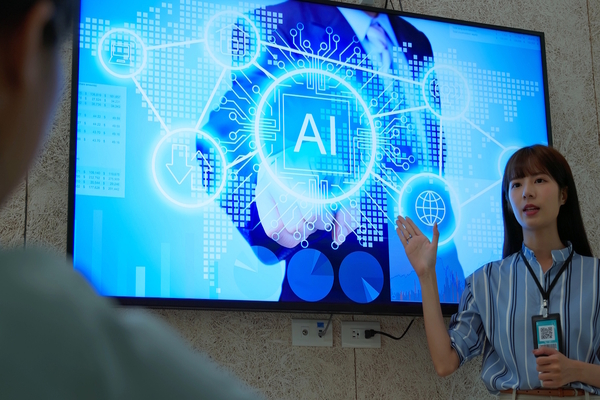The smarter way towards smart factories
Sponsored by SCIOMichael Goepfarth, CEO, SCIO Automation
Despite a surge in interest over the past decade, automation isn’t new – and nor is the concept of the “smart factory”. Manufacturers and designers have been trying to make factories “smarter” since the late 18th century, when new manufacturing processes developed in Europe gave rise to the industrial revolution and brought to the production of goods a level of speed and efficiency that had eluded previous generations of workers.
But the automation of factories today of course has a very different feel to that of the Industrial Revolution. By the late 1700s, new machines were appearing on the factory floor, but large workforces were still indispensable to the manufacturing process. There were no computers that could gather data on output, or that could predict where problems in the factory line might occur. There was heavy wastage, both material and financial, and production – despite being much faster than before – was still slow.
In the present era, however, innovations in technology stand to drastically reduce waste and enhance efficiency. The “smart factories” currently being imagined and developed are fully digitised spaces where AI and machine learning provide fine-grained data on every aspect of the operation. They have come about in tandem with advancements in logistics, among them smart warehouses and conveyor systems, and autonomous material flow – developments that are essential to the “smart” functioning of factories.
The myriad aspects of the manufacturing universe – the factory, the supply chain; even the talent pipeline – are intimately connected through new technologies; indeed, the processes that have improved production have grown together with those that improve logistics, such that the two have a symbiotic relationship. In the factory, floor managers can see in real-time how efficient production is on any given day, where wastage is occurring, and where problems, such as blockages in a machine, might arise. So too is each component of a supply chain – where transportation of goods might be problematic; where supply might be low – subject to far closer scrutiny than previously.
In short, the smart factory of today, and the environment it sits within, brings a far more enhanced level of operation than previous manufacturers enjoyed. But not everyone is jumping on board. Manufacturing companies can be unwieldy things, averse to change and lacking the flexibility to take their operations in a new direction. Yet they also know that if they don’t evolve, they will lose out on business, and costs will remain high.
SCIO Automation understands that technical innovation should no longer be viewed as merely an advantage – something that will make a business stand out from the crowd – but as key to the survival of companies involved in, or reliant on, manufacturing. It’s not a niche product; rather, it has become central to competitiveness. Without modern automation, businesses will die. SCIO has been tailoring integrated automation needs at all operational and information technology levels to clients for decades, and in the process has become a linchpin of the global transition to Industry 4.0. If there isn’t a solution for its clients currently on the market – for instance, Autonomous Mobile Robot solutions for the demanding and flexible transportation of parts from the warehouse shelf to the production line – SCIO can design one.
Central to smart factories is the harmonising of the different logistical and production elements of their operation. Every aspect needs to work together, towards one goal. But companies have struggled with the transition to smart manufacturing in part because they have taken automation on a component-by-component basis. SCIO impresses upon clients the need for the connectedness and symbiosis of logistics and production, and within that, all the “smart” parts – sensors, connected devices, cloud computing, Big Data and more. This is important because improved productivity and efficiency rests on managers being able to see the entire operation in real time, and in one place. Huge advancements have been made in the technologies designed to improve efficiency on the factory floor, as well as along the supply chains that products pass through when they leave the factory. Not every business has the confidence to make the changes necessary to stay competitive, however – these changes are, after all, daunting, and there is risk. But with the right kind of help, those risks can be mitigated. And when manufacturing businesses do begin their march towards Industry 4.0, the long-term benefits of smart factory technology – improved workplace safety, enhanced productivity, minimised waste, lower operating costs – will soon materialise.
Get more information about SCIO at www.scio-automation.com.

Business Reporter Team
Most Viewed
Winston House, 3rd Floor, Units 306-309, 2-4 Dollis Park, London, N3 1HF
23-29 Hendon Lane, London, N3 1RT
020 8349 4363
© 2025, Lyonsdown Limited. Business Reporter® is a registered trademark of Lyonsdown Ltd. VAT registration number: 830519543





